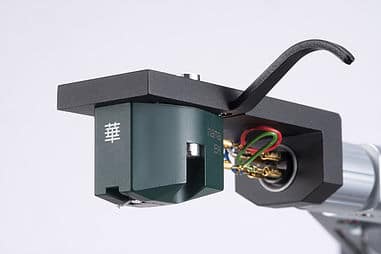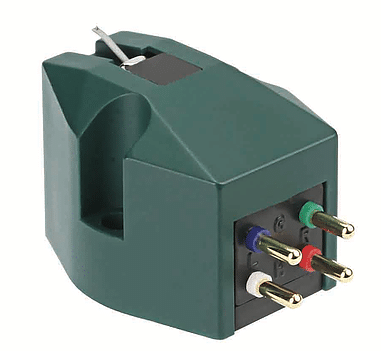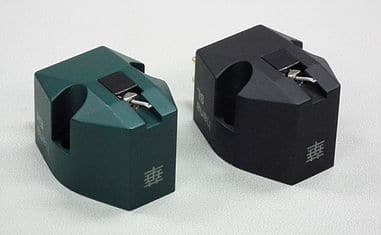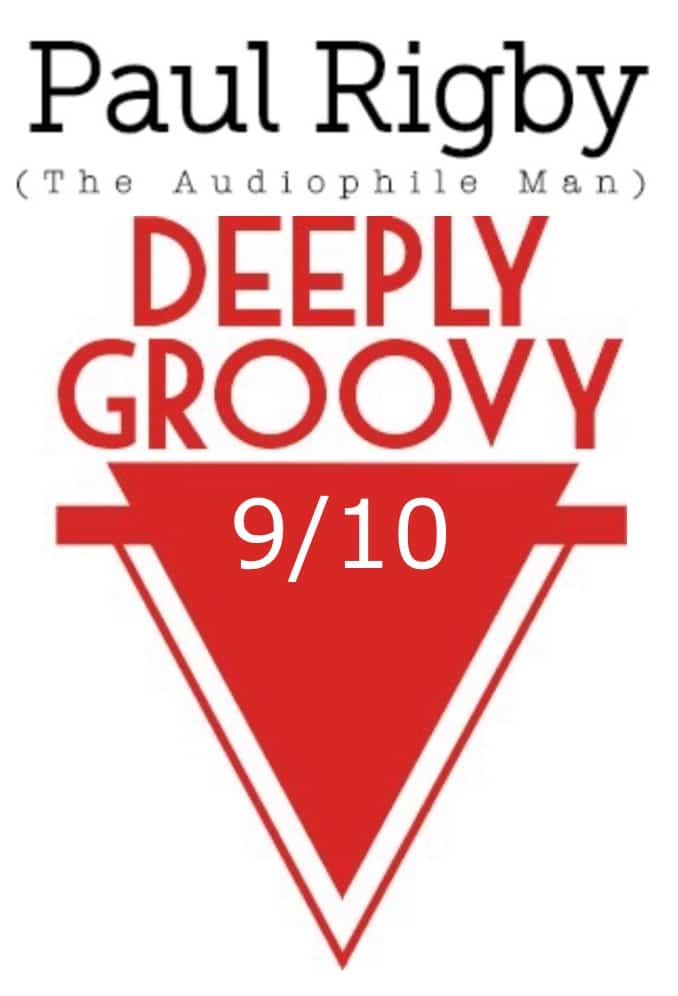The Article
HANA AND HER SISTERS: the EL and EH moving coil cartridges
21st February 2016

The ‘gals’, in this case, being a pair of moving coil cartridges which can be yours at a low, low price. Paul Rigby reviews the Hana EL and the Hana EH.
The concept of the low priced Moving Magnet cartridge is about as common as the concept of the high priced Moving Coil cartridge. It’s when you get to mixing the two, the low cost Moving Coil that is, that issues start to occur. Beside my reference Denon DL-103, I find it tough recommend a low cost MC, so it was with a certain amount of trepidation that I grabbed two designs from the Japanese outfit, Hana: the EH and EL.
Manufactured by the Excel Sound Corporation (a manufacturer of cartridges for forty years), the EH is a high output (2mV) model that is best heard when connected through a MM phono amplifier or the MM stage of a dual output unit while the EL is a low output (0.5mV) cartridge to be connected to MC sockets. Both arrive in a ‘moss green’ coloured chassis and both sport an aluminium cantilever and Synthetic Elliptical stylus.
Despite the fact the both cartridges have a fair amount of mass, both are light. Shockingly light, in fact, when compared to the reference Denon DL-103 which weighs in at 8.5g instead of the Hana’s 5g. Fortunately, my Enterprise arm was able to cope but you might like to make doubly sure that your turntable’s arm can apply sufficient weight to balance out the Hana.
SOUND QUALITY
I was about to turn to jazz but switched to a variant instead. Eydie Gorme and a slice of bossna nova on the album, Cuatro Vidas, with the backing outfit, El Trio Los Panchos. Gorme sang a soft ballad, Vereda Tropical. This track is perfect when challenging low priced MC cartridges. It offers delicate yet complex vocal harmonies, bold Spanish guitars and a recessed version of the same, some relatively exotic percussion via conga drums, wood block and maracas and plenty of potential silence flowing around the lot. I selected this LP to focus more on the mids and treble areas of the sound spectrum, although a subdued double bass did ask questions of the Hana’s lower frequency capabilities.
To begin, I selected the EH model, which meant plugging my turntable into the MM sockets of my PS3 phono amp which required that I up the gain by a couple notches to reach the required volume.
My first impressions of the EH was that it was a very smooth, easy going, performer. Gorme had an attractively husky edge to her delivery which was beautifully portrayed here, along with subtleties such as intakes of breath and upper midrange vocal straining during crescendos. Similarly, her vocal harmonic backing was not just smoothly portrayed but mellifluous in tone.
Moving to the Spanish guitars, both the lead and rhythmic versions were accurately reported. In fact, the latter, normally rather shy instrument, was illuminated and found to be amusing himself in the corner of the soundstage while the entire bank of percussion, shoved onto one channel by the mastering engineer, offered admirable instrumental separation. Hearing each instrument as it entered and left the arrangement was never a problem.
Turning to more dynamic fare, I played a recently re-issued Joy Division album, Substance and played the aggressive song, Leaders of Men, which was introduced by a rather insistent bass guitar. Lead vocals were articulated well via the EH. There was a lot of passion and energy infused into this area which could have invited slurring and blurring at times but the EH successfully resisted any such urge. More than that, the texture of the vocal delivery added to the emotive presentation which helped the ear to engage with the motive power of the music. Bass, although possibly lacking a touch of punch and attack, still delivered sufficient heft and power to provide a balance to the track as a whole. This aspect also gave the track a forceful foundation. Similarly, the bass guitar, rolled with an addictive toe-tapping rhythm.
Finally, looking for a more classically-arranged piece, I turned to Ennio Morricone and the music from the cult film Il Prefetto Di Ferro and the title track which exhibited flow and a rich sweeping effect during the mid-track string crescendos while the wind section, free of any suggestion of brittleness, offered calm assurance. As the track reached its conclusion, an admirable focus was evident, as the arrangement became more complex in structure.
There was a recorder ‘solo’ in the track, Tema dei Ricordi, which did show how relatively revealing the EH can be for a MC at this price. ‘Revealing’ is good for the critical audiophile, it provides a lot of information and allows you to judge and fully examine the master. On the other hand, if the master or pressing is not up to the job then the music becomes less enjoyable. That was the case here as the master failed to cope with a dynamic extremes and the recorder solo lapsed into brightness. Of course, this is not a criticism of the EH, which was merely doing its job.
Later, during the track La Ballata del Prefetto Mori, the challenging tones of Rosa Balestrieri, a folk singer who threatens to shred her vocal chords, was illuminated well by the EH. The texture of the voice was successfully presented, adding atmosphere and nuance to her delivery.
Moving to the EL, I lowered the gain back to its previous levels and began the sound test for this particular cartridge with Gorme’s Spanish venture. As our tests showed, treble on this track was not quite as impressive and the midrange, while still showing an impressive degree of detail, added a touch of extra warmth. This could be heard via the plucked strings of the Spanish guitar which sat back in the master a tad and, although could still be easily heard, did not present quite the same sort of impact as the EH in terms of focus and clarity. The slight midrange glow being a result of that extra warmth.
This element didn’t effect the percussive effects tremendously but it did add extra romance and a slight softness to the vocals. In some respects, this touch of new warmth provided a new level of engagement when the ear focused on the vocal delivery. The slight warming tone beckoned the ear and the instrumentation almost floated over the soundstage.
Moving to Joy Division, I was impressed, faced with high energy music, how integrated the presentation appeared. Yes, the treble-infused cymbal strikes were not quite as focused or as reverb laden on the EL and the lead vocal was not as separated from the backing instruments as the EH but the EL did combine all the best parts of this intense, dynamic track and offered a highly enjoyable experience, nevertheless. I was quickly learning that the EL is all about that: the overall experience. Whereas the EH offers plenty of highlights and features to underline and admire, the EH excels in terms of how it co-ordinates music to offer a highly enjoyable event.
Bass performance, possibly because it’s so tightly integrated within the soundstage of the EL, proved to be a powerful driving force. It never dominated or bloomed but remained balanced within the mix providing a secure substructure and a sense of movement to the entire song. With the EL in this mood, the temptation, with high energy music, was to let rip and push the volume to maximum limits.
Moving to Ennio Morricone and the title track to Il Prefetto Di Ferro which accentuated the rich sweeping strings and added a romantic flow to the wind section. As for the troublesome recorder solo that can be heard within Tema dei Ricordi? The EL exhibited a rather more forgiving performance which actually meant a slightly more enjoyable listening experience from the EL on this track. Especially when it came to that recorder which, via the EH, can be rather piercing to the ear. The EL toned down these strident effects slightly. That’s not to say that the detail was found wanting though as, during Rosa Balestrieri performance, her textured vocal output still retained a force and power while her emotive impact was still fully present.
CONCLUSION
There’s a sense of swings and roundabouts in terms of the EH and EL versions of the Hana cartridges. I felt that the EH provided a slightly more accurate and tonally a tad more exacting performance in how the detail was extracted from the master while the EL, utilising that slight measure of extra warmth, gave the music a slightly more forgiving nature. In effect, you could say that the EL looks at the bigger picture. The latter, rather than focusing upon specifics, provided a possibly more engaging and flowing performance. Both cartridges, however, performed well and both bring genuine advantages to any listening session while both offer terrific value for money.
HANA EH
Price: £276
Good: detail, focus, clarity, value for money
Bad: nothing at the price
RATING: 9
HANA EL
Price: £276
Good: musical engagement, romantic mids, bass, value for money
Bad: nothing at the price
RATING: 9
Web: www.airaudio.co.uk
Tel: 01491 629629
REFERENCE SYSTEM USED
Origin Live Sovereign turntable
Origin Live Enterprise 12” arm
Denon DL-103 cartridge
Icon Audio PS3 phonostage
Aesthetix Calypso pre-amp
Icon Audio MB 845 Mk.II monoblocks
Quad ESL-57 speakers with One Thing mods
Vertex AQ & Atlas cabling







Paul, if you had to choose between the Hana and Benz Micro ACE cartridge which would you choose?
Tough question because both are excellent designs. At a push? The Hana.
I currently use a DL-103R on a Rega P5 and don’t use a spacer as the Denon is only 1 mm higher than a Rega cartridge. What is the height of the Hana? I cannot find this spec anywhere. Thanks!
You’ve got me there, Michael. I would ring your favourite dealer. Say that you’re thinking of buying one, say that the dimensions are critical to fitting one in your turntable an ask the guy on the phone to physically measure one for you.
HI Paul
I really enjoyed your review. It would have been useful to compare these two cartridges to your reference, the Denon 103 as so many of us know the sonic signature of that cartridge. It is interesting to speculate how two cartridges differ when they are the same model but different output levels. Are the perceived differences mostly the result of the cartridges or the the fact that the low output cartridge is going through and extra gain stage and of course different impedance loading. HAve you done a similar comparison of other 2 output level cartridges like the Dynavector DV20. Might provide some insight into that concept.
Keep up the good work, I enjoy your insightful reviews.
Hi Alvin – whenever I use a reference piece of kit, there is always measure of comparison with it. That was the case here with the Denon, so you can read that into the review itself. That comparison is not explicit in language terms because the review is not a direct A-B, ‘face off’ and I try to use my experience to bring in other factors to make my conclusions more democratic, as it where. That said, if pushed, I preferred the EL. I didn’t really have time to integrate the Dynavector in the manner you suggested. Although that would have been an interesting exercise, I grant you. When I’m faced with this situation agin – and I’m sure I will be – then I’ll endeavour to do that very thing or at least something similar.
Paul,
This statement doesn’t make sense to me: “Despite the fact the both cartridges have a fair amount of mass, both are light. Shockingly light, in fact, when compared to the reference Denon DL-103 which weighs in at 8.5g instead of the Hana‚Äôs 5g.”
Fair amount of mass and shockingly light? Mass is mass and weight is force due to gravity for a given mass. “Light” presumably refers to weight which is wholly dependent on mass.
Hi Bill – poor choice of words, maybe? I was using the words in a classic hi-fi sense, I suppose. ‘Mass’ in terms of physical bulk. Light in terms of the tracking force.
Hello Paul,
Time for me to replace my Charisma 103. I don’t want spend that kind of money this time around, so thinking about the Hana EL. Reading some really nice Hana reviews, including yours, but some say i’m better off with the Denon 103R. I’m using a Michel Gyro SE with an RB 300 arm. What sayeth you, good sir?
Thanks,
Thanks for the question, Michael. I’d say Hana. Not many people know that Hana is made by a supreme cart creator in Japan. The same guys who created this beast, in fact: https://theaudiophileman.com/etsuro-urushi-mc-cartridge-review/
The Hana is their export-only line. Not for sale in Japan, that is. As I say, no-one talks about this. They know their stuff, basically. Hana is wonderful value for money and should be more expensive than it is. Go for it 🙂
Thanks Paul.
I suppose EL or EH, in accordance with your review, would then be a personal choice. If i’m not mistaken, you felt the EL was a little more musical(?), so to speak.
Absolutely – personal preference does come into it at this point. If you can’t get to the dealer, it might be worth asking your chosen retailer if they support home demos. Then you could try it in your preferred listening room – always worth asking.
Hi Paul,
did you compare the Hana EH with the Dynavector 10 x 5?
Cheers.
Mauro
Hi Mauro – no, the reference system is listed at the base of the review.
Thanks for the effort in this review and in your YouTube channel as well. You keep things light yet detailed and useful. I’m new to the goal of building a 2 channel TT hifi system having just bought a Rega Brio and Elac bookshelf speakers with a Rega P3 as the next purchase.
Originally I was thinking that I would just get a quality MM cartridge in my price range(300-500 USD)but then I started researching more affordable MC cartridges like this Hana. Any comparisons or obvious contrasts that you’ve made with this cartridge and MM cartridges similarly priced?
Thanks for your kind words, Roger. And yes, the Hana is a real find and a sonic highlight. The only issues are to make sure that you have an arm to support it and Regas have quality arms and you have a quality phono amp to feed the increased detail to your amp. Removing possibly bottlenecks is the main task when installing a MC. That is, there’s no point in investing in a MC if the new, extra detail is backed up by an under-performing part.
Oh and make sure your Rega arm is level when you install the Hana. You may need to invest in a metal ring (that fits underneath the Rega arm) to raise it a tad. This is Rega’s way of putting you off buying non-Rega parts. Their arms can’t be easily raised to accommodate ‘taller’ cartridges (Rega carts tend to be rather low slung)
Thanks very much for the feedback! I know it’s a journey that will wind it’s own way as I learn and find my own tastes but it’s nice to start off on good footing.
Hello Paul – how do these compare to the Goldring 1042? Which has your preference? I’m running a Goldring 1006 at the moment and not sure whether to go for the D42 stylus or replace with a Hana EL/EH or even SL/SH.
Hi Ron – I don’t, really. They’re chalk and cheese because they address different technologies and different customers and different hifi chains. To get the best from the Hana you’ll need a good quality MC phono amp and you’ll need a better support system from your turntable and arm to make sure there’s no bottlenecks. Hence, when recommending a low-cost MC, I tend to talk about what’s around the cart. More than even the cart itself.
Hi Paul,
Many thanks for the feedback. I should have provided some more info regarding my system. I have a Rega planar 3 (unmodded) and I would be purchasing a Mofi Ultraphono for running MC carts). I think both the Rega and Ultraphono are up to the task of running an MC cart. All connected to Rega IO amp (for now).
I would take care, if you’re looking to fit either a Hana or the Goldring, that the Rega’s tonearm remains level. Invest in shims, if required, but do some preparation and research to make sure that the tonearm doesn’t run at an angle. I’d look at that first before anything else. Despite their inherent sonic qualities, this is the downside of Rega. The company like to apply subtle pressure and would prefer that you buy their low-slung carts instead 🙂